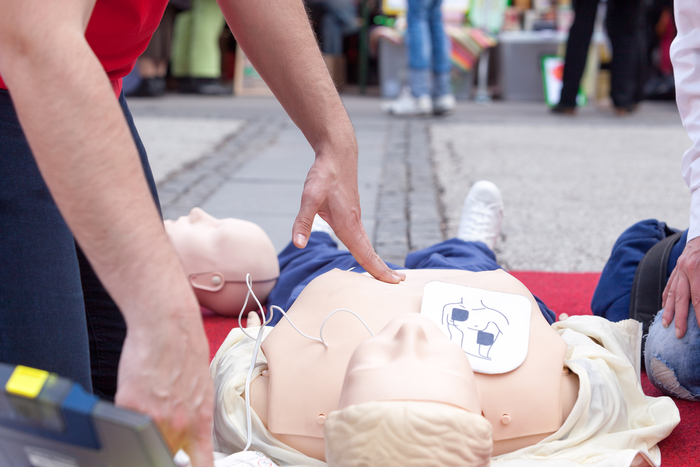
When we think of traumatic injury, we typically envision gruesome wounds: amputations, avulsions, impaled objects, compound fractures. And any of these injuries can impact the thoracic cavity. But thoracic trauma can also be frighteningly subtle. So, let's discuss the various ways the chest can be impacted by trauma and some of the clinical signs that may accompany such injuries. Recognizing thoracic trauma is the first step in effective treatment.
Thoracic trauma can result from myriad scenarios: automobile accidents, where the patient impacts the steering wheel; gunshot wounds, either through-and-through or those that pinball within the cavity; or stabbings, which can nick or sever veins and arteries. The result? A severely compromised patient.
Recognizing Thoracic Trauma
The patient's presenting signs and symptoms will depend upon the structures affected and the extent of the damage. Minor trauma, such as an isolated fractured rib, or a minor pulmonary contusion, may present with point tenderness and pain upon inhalation/exhalation. The patient's oxygen saturation will typically not be affected in such cases, and careful packaging and transport, along with supplemental oxygen (when necessary), continuous monitoring, and pain management, are about all that is required.
However, in the case of serious trauma, such as multiple fractures, major contusion (to lungs or heart), or collapsed lungs, the patient will exhibit signs of hypoxia, and immediate action is required. These conditions include:
- Flail chest
- Hemothorax
- Cardiac tamponade
- Tension pneumothorax
- Aortic disruption
Signs of Thoracic Trauma
Let's break the signs of thoracic trauma into two general categories: those exhibited on the chest itself and those general signs exhibited by the patient.
Chest Signs
- Crepitus – palpate chest using both palms simultaneously
- Bruising
- Swelling
- Deformity
- Impalement – stabilize in place
- Muffled heart tones
- Abnormal breath sounds (crackles, wheezing)
- Absent breath sounds
- Asymmetrical chest rise
- Subcutaneous emphysema
General Signs
- Dyspnea
- Hypotension
- Hypoxia
- Tachycardia
- Tachypnea
- Pallor
- Diaphoresis
- Delayed capillary refill
- Cyanosis
Treatment Considerations
Following your rapid assessment, immediate life-threatening conditions must be addressed and treated. These include
- Oxygen therapy/assisting ventilations
- Resuscitation
- Controlling bleeding
- Needle decompression
- Immobilization
Once the patient is packaged for transport, the secondary survey can be conducted, along with monitoring, IV access, fracture stabilization, and continuous reassessment. It is critical to recognize those patients requiring a Level I trauma center (or the highest level available). These patients include:
- Those with penetrating injuries to the head, neck, torso, and extremities proximal to elbow and knee
- Flail chest
- Two or more proximal long-bone fractures
- Crushed, degloved, or mangled extremity
- Amputation proximal to wrist and ankle
- Pelvic fracture
- Open or depressed skull fracture
- Paralysis
Just as thoracic trauma comes in a wide range of injuries, so too do the signs. The most important thing you, as an emergency responder, can do is recognize the signs, initiate effective treatment, and stay alert for any changes in the patient's condition.
Editor's Note: This blog was originally published in June 2017. It has been re-published with additional up to date content.

















